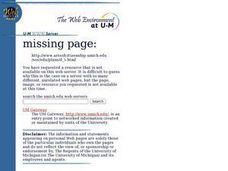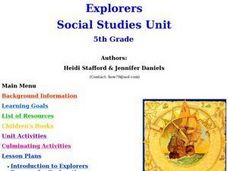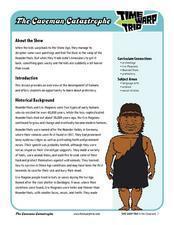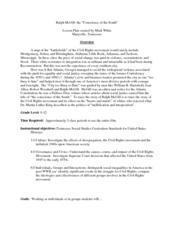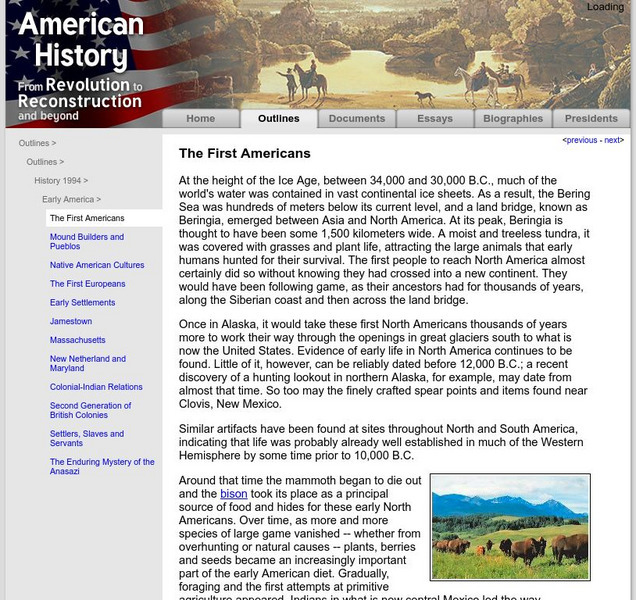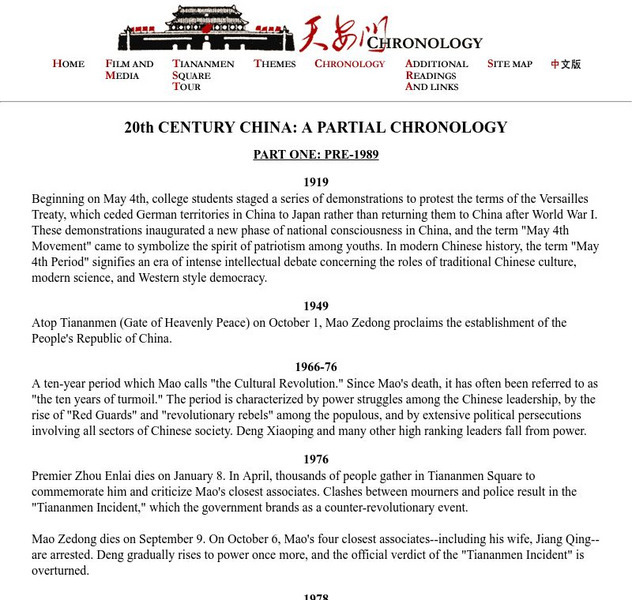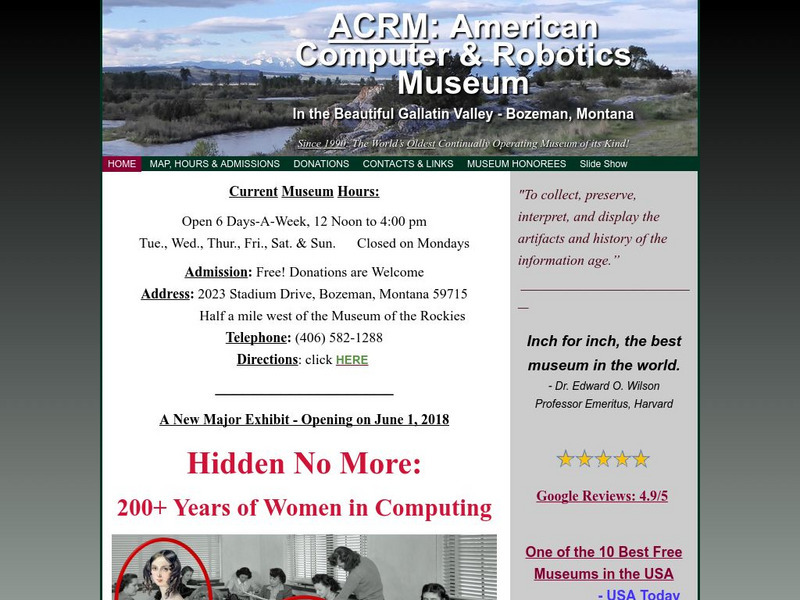Curated OER
Kids and Leisure in Early 1900s Ann Arbor
Fourth graders describe how Michigan has changed and stayed the same over time; describe and classify human/cultural characteristics of Michigan; describe and explain the importance of individuals and groups who have made a difference.
Curated OER
Explorers Unit
Fifth graders complete a unit on early explorers. They develop a timeline, sing a Viking song, watch a video, compile a checklist of supplies needed for an expedition, participate in a scavenger hunt, write a letter from Christopher...
Time Warp Trio
The Caveman Catastrophe
Young archaeologists study the development of human history, and work in groups to create a timeline that traces the development of humans. Additionally, the groups utilize a very clever graphic organizer embedded in the plan in order to...
Curated OER
Where is the Trail? The Journey of Lewis and Clark
Students explore the trail followed by Lewis and Clark on their journey across the United States. In this United States History lesson, students complete several activities to establish the Lewis and Clark Expedition, including a class...
Curated OER
Where Did Foods Originate? (Foods of the New World and Old World)
What do papayas, peanuts, pineapples, and potatoes have in common? Why, they are foods explorers brought back to the Old World. Young researchers use the Internet to investigate how New World explorers helped change the Old World's diet....
Curated OER
What is the Evidence for Evolution?
Middle schoolers identify one object that would tell the story of their lives. In groups, they determine what can and cannot be told from objects left behind. After watching a video, they compare and contrast chicken bones to human...
Curated OER
Ralph McGill: the "Conscience of the South"
Learners view a film, "Dawn's Early Light: Ralph McGill and the Segregated South." As groups of students observe the movie, they list key dates, significant persons interviewed, and cultural characteristics. Upon completion of the movie,...
NET Foundation for Television
1850-1874 Native Americans and Settlers
Did Western settlers receiving free land from the Homestead Act realize it wasn't really free at all? Scholars investigate the impact Western expansion had on Native American culture in the mid-1800s. They use documents, timelines, and...
Curated OER
Europe – Religion and Reformation
Ninth graders examine the Reformation. In this European history lesson, 9th graders explore the 95 theses of Martin Luther and discuss the reaction of the Roman Catholic Church to his ideas. Students then take a quiz based on the lesson.
Curated OER
The Lesson: Space Exploration
Learners explore space. In this current events instructional activity, students visit selected websites to learn about NASA, Mars, the Seti Institute, and space exploration terminology. Learners make space glossaries and their own...
Curated OER
Taming the Wild Aurochs
Fourth graders assess the development of animal husbandry, outline it in detail as well as arrange the steps in sequential order. In addition, they discuss how certain animals came to be domesticated, concentrate to research on one of...
Curated OER
To Be or Not to Be: A Marriage of Civil War Descendants
Students examine primary documents related to the burning of Chambersburg during the Civil Way. In this Civil War era history instructional activity, students study numerous primary documents relating to the burning of the town of...
Smithsonian Institution
National Museum of Natural History: African Voices: History
Trace Africa's history from the earliest humans to modern times using this thematic timeline. Learn about African trade, religion, empires, and technology. Vibrant pictures are included for each time period showcasing the African culture.
University of Groningen
American History: Outlines: Early America: The First Americans
Gives an overview of the timeline of humans establishing themselves in the Americas, starting with the crossing of the Bering Sea land bridge some time before 12,000 B.C. Archaeological evidence shows humans moving south and eventually...
Other
Center for Asian American Media: Chronology of the Pro Democracy Movement
A detailed timeline starts with events in the early part of the 20th century and then covers the year 1989 during which the massive protests in Tiananmen Square took place.
National Endowment for the Humanities
Neh: Edsit Ement: Eyewitness to History (Lesson Plan)
Understanding the important events in United States history and being able to recognize how history affects current events are crucial skills for students. This lesson plan lets them examine and analyze important milestones through...
